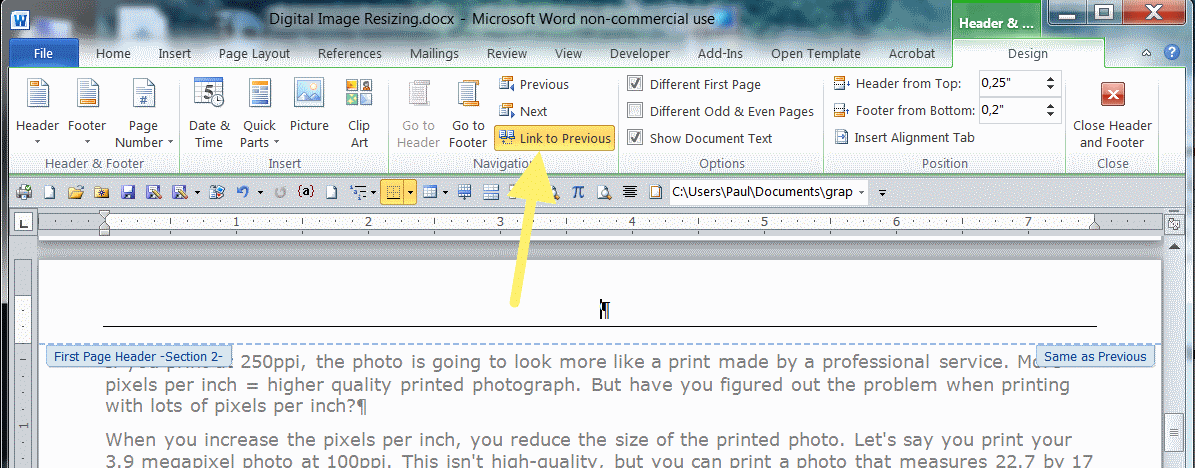

Any text that you subsequently type on the second page will pick up the margin settings from the text on that page. The crucial thing is to select all the text on the separate pages before you set the margins - and not to select the page or section break itself when you're changing the settings. You can also drag the first-line indent control (a small rectangle) separately from the overall indent control (the triangle). Select all of that text (but not the section break) and change the margins in the ruler. Now click into the second page and type a couple of paragraphs, followed by a paragraph return. You should see this, with the blue left margin where you originally set it and the section break as a thick horizontal line at the end: Now click back into the text above the break. This will have the effect of creating a second page below your first. Then go to the Insert menu and choose Section Break (this should work with Page Break too). Click at the end of the text, and press return to make sure you have completed a paragraph. On your first page, select all the text and set the margins as you want them. The second shows non-printing formatting marks and will help work out where you are in the document. To apply preset margins, click one of the preset.

This button’s drop-down menu contains a Last Custom Setting option, six preset margin choices, and a Custom Margins command. Then click the Margins drop-down button in the Page Setup button group. It helps if you start by going to the View menu and choosing Show Rulers and Show Invisibles. To set margins in Word, first click the Layout tab in the Ribbon.


 0 kommentar(er)
0 kommentar(er)
